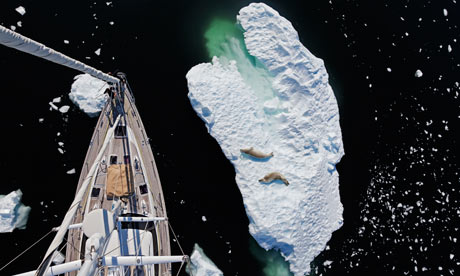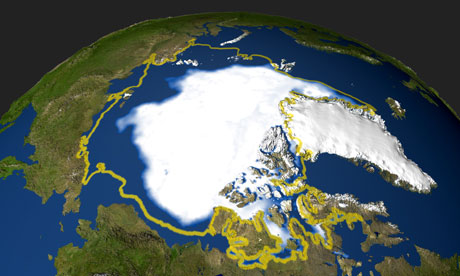Beyond the Arctic Circle, at the Toolik Field Station, scientists measured ice and temped the ground of dried rivers, caused by just a little climate change, which is bad news to southern lands because the ground is only adapted to cold temperatures. Hence the climate change, rivers dry up, not only affecting Alaska, but rivers flowing down South. The Arctic almost acts as North Americas air conditioner, and "changing" the temperature creates rot and reflection. The Tundra earth stays in darkness and frost, and stores carbon. As the ground warms up, the carbon is released into the air. As more of the ice and snow melts, more ground is exposed, hence not being adapted to this climate change, the earth rapidly warms.When these large air systems move across other regions, weather can change and shifting drought and rainfall further away.Bore holes are drilled into the permafrost and they read that the ground is 3 to 5 degrees Fahrenheit warmer than that of the late 1970's, and the ice is melting at a much faster rate. Average air temperatures are rising more in other zones, as in the tropics or temperate regions. Spring comes early and fall later. In reality, just a little change in temperature is a big drastic change for some plants and animals. The decline in Arctic streams nearly kill of the fish. Climate change and the carbon that is emitted into the air doesn't just affect Alaska, or any of the surrounding regions, it affects all of the regions down South as well, changing weather, average temperatures, and times seasons come and go. The solution is to find a way to slow down this process, by in means of people doing their parts in being conservative of how much carbon they emit into the Earth's atmosphere.
http://www.adn.com/2008/08/10/489180/at-toolik-field-researchers-see.html


